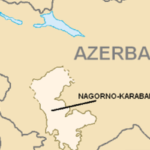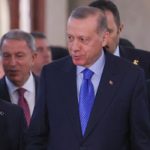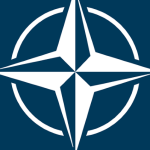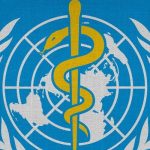La guerra in Ucraina è al suo culmine?
La guerra in Ucraina è in un momento cruciale. Nel Luhansk è in corso una cruenta battaglia tra l‘esercito russo (con i suoi sostenitori separatisti) e un ormai stanco esercito ucraino (che viene comunque, anche se lentamente, rafforzato dalle armi e munizioni occidentali). Analisti internazionali prevedono che all’inizio di luglio sarà raggiunto davvero il punto culminante nell’attuale fase della guerra.
Tale previsione giustifica la continua richiesta di maggiore supporto militare dal governo ucraino. Nei più di cento giorni trascorsi da quando il presidente Putin ha lanciato l’invasione, i Paesi NATO hanno avuto un chiaro indicatore delle capacità delle forze armate russe e, alla fine di giugno, al vertice dell’Alleanza di Madrid, verrà conseguentemente concordato il Concetto strategico della NATO per il 2022.
A Madrid guardando a est
Per ora l’aggressione russa ha ottenuto la Finlandia e la Svezia stanno per entrare a far parte dell’Alleanza (capricci e interessi turchi di Erdogan permettendo), e che anche nazioni come i Paesi Bassi hanno ora deciso di raggiungere il livello del 2% del Defence Investment Pledge (2% del PIL nazionale per la difesa), dopo anni di resistenza. L’Italia ha “spalmato” su alcuni anni il raggiungimento di tale obiettivo.
Forse la decisione più cruciale che dovrebbe essere presa dai Capi di Stato e di governo dell’Alleanza sarà proprio l’impegno per una nuova organizzazione delle forze di difesa avanzate. C’è una sorta di paradosso in discussione, in quanto la visione del mondo di Putin può essere così riassunta: “Acconsento alla sfera di influenza dell’Occidente, che include tutti i membri esistenti dell’UE e della NATO, ma solo a condizione che l’Occidente acconsenta alla sfera di influenza della Russia che include l’Ucraina. Se l’Occidente contesta la sfera di influenza della Russia, contesterò i confini della sfera dell’Occidente”.
Il Concetto strategico della NATO che verrà definito a Madrid dovrebbe essere l’elemento trainante della strategia della NATO per il prossimo decennio. Tuttavia, data la centralità delle forze statunitensi nell’importantissima politica di deterrenza e difesa dell’Alleanza, la nuova Strategia di difesa nazionale statunitense è forse la direttrice a cui la NATO dovrà adattarsi entro il 2030 se l’Alleanza vuole rimanere credibile nei suoi compiti principali.
La strategia e le aspettative degli USA
La missione principale della Strategia di difesa nazionale americana (NDS) 2022 è plasmare e dimensionare la capacità militare futura degli Stati Uniti con il budget che la sostiene e, per la prima volta, NDS 2022 pone un occhio particolare al supporto di alleati e partner, e quindi implicitamente alla NATO. In breve, NDS 2022 implica un ruolo molto più importante per gli alleati, che si chiede, vadano avanti nell’assistere gli Stati Uniti a raggiungere i propri obiettivi strategici e le sfide, in particolare all’interno del e intorno al teatro europeo. Va rimarcato comunque che l’NDS 2022 dà alla Cina Popolare e all’Indo-Pacifico una priorità più alta rispetto a Russia ed Europa, anche se descrive la Russia come una minaccia.
Sarà interessante vedere se l’Agenda 2030 della NATO e il Concetto strategico della NATO saranno all’altezza di tale sfida strategica americana.
Washington ha anche la necessità, vitale per gli Stati Uniti, di essere in grado di contrastare minacce come la Corea del Nord, l’Iran e l’estremismo violento, ma ci sono anche da considerare i cambiamenti climatici e le pandemie (cinesi).
Per il futuro gli USA offrono agli altri Paesi della NATO una chiara direzione di marcia. La capacità militare del futuro dovrà essere costruita su tre principi: la “deterrenza integrata”, la generazione di una potenza di combattimento credibile (comprese le forze nucleari), la necessità di creare un vantaggio duraturo sfruttando la supremazia nelle tecnologie emergenti.
Come sempre, tutto dipenderà dal denaro pubblico americano investito dal Congresso. Ci sono già alcuni indicatori. Mentre il budget concordato per la “European Deterrence Initiative” per l’anno fiscale 2023 sarà di 4,2 miliardi di dollari, la “Pacific Deterrence Initiative” riceverà 6 miliardi di dollari. Per gli alleati della NATO il messaggio è chiaro: se la garanzia di sicurezza degli Stati Uniti per l’Europa deve essere mantenuta in modo credibile gli europei dovranno condividere gli oneri della difesa in modo molto più equo (coprire il 50% della capacità della NATO entro il 2030 è probabilmente il minimo che gli americani si aspetteranno dai loro alleati).
Cosa deciderà la NATO
L’invasione dell’Ucraina da parte della Russia ha chiaramente accelerato la pianificazione della difesa della NATO ed è stato deciso di attivare tutti i piani di risposta graduale e le appropriate operazioni di risposta alle crisi come azione di contrasto diretta all’aggressione. Parrebbe che le autorità della NATO siano diventate notevolmente più audaci rispetto al passato e al vertice di Madrid sarà adottata una nuova strategia militare che, per la prima volta, stabilisce un comando militare delle forze impegnate sul fianco orientale della NATO per consentire operazioni terrestri, marittime e aeree più integrate.
L’Alleanza e gli alleati investiranno ulteriormente in una serie di capacità militari avanzate per affrontare sfide nuove e durature in tutti i domini operativi. L’obiettivo è che la NATO sia in grado di fornire una serie di capacità importanti e sofisticate in numero sufficiente per essere ruotate efficacemente per la durata di qualsiasi crisi. L’Alleanza continuerà inoltre a migliorare e adattare la sostenibilità, la dispiegabilità e l’interoperabilità delle sue forze. I piani nazionali di sviluppo delle capacità sosterranno (si spera) la piena e tempestiva generazione di tali capacità, in linea con il processo di pianificazione della difesa della NATO.
Soprattutto, la NATO ha davvero bisogno di iniziare a pensare in modo molto più convincente alla guerra futura e al concetto stesso di deterrenza e difesa nel ventunesimo secolo. L’automazione e la digitalizzazione della guerra cyber accelererà, forse, in modo esponenziale.
Gli alleati europei della NATO (Italia compresa) devono mantenere ciò che promettono o gli avversari potrebbero approfittarne. La NATO, e soprattutto gli alleati di questa sponda dell’Atlantico, devono capirlo.
Senior Fellow del Centro Studi Politici e Strategici Machiavelli. Generale di Brigata (aus.) dell'Esercito Italiano, membro del Direttorato della NATO Defence College Foundation. Per anni direttore della Middle East Faculty all'interno del NATO Defence College.









Scrivi un commento